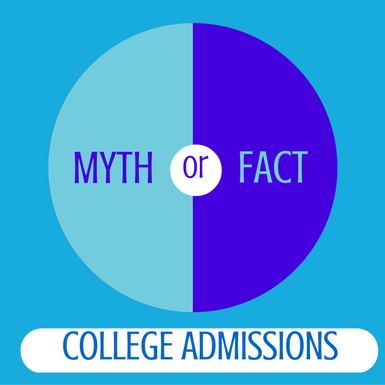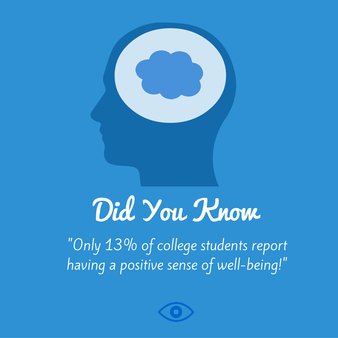Applying to a UC Campus? The Application Submission Period has Begun. 6 Important Reminders!11/10/2015 Taken directly from the University of California Counselors and Advisor Bulletin, which you can view here. "The application cycle is fully underway and students can submit their applications through Monday, Nov. 30 at 11:59 p.m. PST. There is no advantage or disadvantage to the timing of a submission, as long as students submit their application on time. After the application is submitted, applicants can only make changes to contact information, update self-reported test scores, and complete application fee payments. 1. Transcripts: Official transcripts should not be submitted unless a UC campus directly contacts a student to request it. 2. Test Scores: Official SAT, ACT, SAT Subject Tests and TOEFL scores need to be sent to only ONE campus - UC will share scores with all campuses to which a student applies. IELTS scores, however, must be sent to each UC campus. 3. Test Dates in November/December: Applicants may report planned test dates in November/December 2015 on the application, then log back into their UC application to self-report scores after they are received. Order official scores from the testing agencies by the end of December. 4. AP/IB Scores: Official AP and/or IB exam scores are not required at the time of application review. Students will only submit an official score report if they accept an offer of admission to one UC campus. The official score report must be received by July 15. 5. Letters of recommendation: UC does not require letters of recommendation. However, a campus may specifically request a letter or two directly from some applicants. 6. Fee Waivers: Fees for up to four campuses can be waived for qualified students. UC's fee waiver program is for U.S. citizens, permanent residents, and applicants eligible for AB540 benefits. Waivers cannot be combined or used for more than four campuses."  MYTH #1: All good colleges are selective! Actually, no. According to the National Association for College Admission Counseling’s (NACAC) 2014 State of College Admission Report, the average acceptance rate, which is the percentage of applicants who are admitted to any given college is 64.7 percent. That means that colleges admit approximately 2 in 3 students. That statistic does not equate to selectivity. Selective colleges with single-digit percentage acceptance rates are actually quite atypical. Students who are willing to consider colleges in a variety of locations and are not fixated on "name brand" have many options. Loren Pope's Colleges That Change Lives is a great resource for the "best colleges you've never heard of." MYTH #2: Private colleges cost way more than public universities! Not necessarily! While the sticker price for a private college is significantly more than that of an in-state public college, it’s not quite that black and white. Many students do not pay the published price of tuition for private colleges. The expected family contribution (EFC) is the amount of money the university believes the family should be responsible for contributing to the student's college costs. If a family's EFC is $65,000 or more, that student will not receive any need based aid, since that amount is more than the cost of most colleges. But only a small percentage of students fall into that $65,000 or more EFC range, and there are some generous colleges (most selective colleges excluded) that offer institutional grants or merit aid that can bring down the costs significantly. It is also important to note that many public universities, especially those in CA, are highly impacted making it challenging for students to get some of the prerequisite classes they need. This can possibly equate to an extra year in college, which must be factored in and compared to the cost of four years at a private college where class availability typically isn’t an issue. MYTH #3: I make too much money for my child to get financial aid, so I shouldn’t bother applying for it. Not true. Everyone applying to college should fill out the Free Application for Student Aid (FAFSA), even the wealthiest of families. Students must fill out the FAFSA to qualify for merit aid and be eligible for federal loans. Families have nothing to lose. It's free to fill out! Also, it is rumored that revealing a healthy financial status can sometimes positively affect admissions decisions. Wealthy families tend to donate more, and colleges know that. Some colleges require the CSS Profile, so students should be sure to fill that out as well if they are hoping for merit aid at a generous college. MYTH #4: Students have to come up with something original for their personal statements! It is virtually impossible to come up with a topic that hasn’t been tackled before. Admissions counselors read thousands of essays each season. They are not looking to discover a creative topic that hasn’t been done before; They want to uncover each student's distinct qualities that can’t be conveyed in the application. They want to know how each student will contribute to their university in a meaningful way. They want to hear each student's voice and not his or her tutor’s or parent’s. MYTH #5: Volunteering in Africa is sure to impress college admissions representatives. Not always! If the philanthropy is related to a passion that student has, and they can see that connection in the student's academic and personal profile, then college reps will most likely view it favorably. However, they will find it no more impressive than volunteering for a similar cause in the student's local community. Some students don’t have the means to travel for these enriching experiences, and colleges insist that they give no more weight to a student who can afford a trip overseas than to one who contributes in her/his own neighborhood. Best advice is for students to engage in volunteering that they feel personally connected to and are not doing just to bulk up their resume. They will feel personally rewarded, and it will look great on their college application.  Prospective students and parents often view college rankings as one of the most important factors, if not the most important factor, to look at when applying to college. But what rankings don’t take into consideration is how well that college fits a student’s personality and meets that student’s individual needs. Kathleen deLanki writes in her article published yesterday in The Washington Post, which you can view here, that research shows “at the college level, it’s all about helping students and faculty to be engaged, hopeful and to thrive. These are actually predictors of success in life and work.” She goes on to say that according to Gallup surveys, “only 13% of college students report having a positive sense of well-being.” deLanski implies that a student’s well-being is a primary predictor of success; therefore, choosing a college that is well suited for that student and offers a nurturing and supportive environment should be front and center when deciding which schools to apply to and which one to ultimately enroll in. When I create proposed college lists for students, I aim to include information about the college’s First Year Experience and the Living-Learning Communities they offer. These programs, which I have defined below, are geared toward acclimating students to college life, engaging them in the campus community, providing mentoring and guidance, and offering academic support. First-year Experience (FYE)—specifically designed to help freshman successfully transition from high school to college. Click here to see an example of the FYE at a larger university (UT Austin) or here to see an example of one at a smaller campus (Pomona). Living-Learning Communities—houses students with similar interests or in similar programs together in an effort to help them feel more connected and more engaged. Boston University, for example, offers more than 30 themed housing options that can be viewed here. Other elements students should look at include the level of academic support offered, what the student advising program is like, and what kinds of internships and co-ops are available. While there are no guarantees that a student will successfully adjust to college life, universities that invest in and offer these kinds of programs communicate the message that the college cares about the well being of its students. It’s a great place to start the process.  A couple of weeks back, I attended the National Association for College Admission Counseling’s annual conference and had the pleasure of hearing keynote speaker Salman Khan tell his riveting story behind the founding of Khan Academy. A story you can watch here in this recent 20-minute interview on Bloomberg. Khan promotes professor Carol Dweck’s idea that people who believe they can get smarter will get smarter. Her Stanford research has proved this. To convey this message, the Khan Academy produced this poignant one and a half minute video “You Can Learn Anything”. A MUST WATCH! Khan’s mission is to provide “a free, world-class education for anyone, anywhere.” He strives to make Khan Academy a great equalizer in education giving access to anyone regardless of age, wealth, social status, or location. What started out as a series of math video lessons now houses thousands of videos on subjects such as science, computing, humanities, arts, finance, and economics, and over 31 million people around the world have tuned in to Khan Academy. But it’s the math curriculum and SAT prep that make Khan Academy most valuable. Khan Academy’s sophisticated software helps students in K-12 learn mathematical concepts similar to how they play video games. They must beat a level before moving up to the next one. They will continue to practice skills until they master them, and it is only after they master a skill that they can move on to the next one. The SAT prep works in a similar fashion with the program recognizing gaps in students’ understanding of core concepts and not moving on to a new concept until they master the foundational skills. An added bonus is that The College Board, the organization that designs and administers the SAT, develops all of the content. This is especially significant since there are few official resources for the New SAT. It is important to note that Khan Academy’s instruction is not meant to replace the physical classroom. It is meant to provide supplemental instruction aimed at helping students gain more practice on concepts they are struggling with. However, the one thing Khan academy lacks is human interaction. While much can be gained from engaging with this online resource, students either have to be focused and self-motivated to reap the benefits, or they need a human being monitoring and encouraging their participation. Having a parent, teacher, or mentor help students find regular times during the week to engage with this resource can be a determining factor as to the success of the program. I highly recommend that parents encourage their children to check out this site if they haven’t already. After all, what’s not to love about FREE K-12 math tutoring and SAT prep?  This past summer, I had the opportunity to work with students on opposite ends of the spectrum: freshmen and seniors. Faced with this dichotomy, I couldn’t help but think about the clear advantage these ninth graders have over most of my current seniors. Before engaging with these younger students, I confess that I believed it unnecessary to start the process this early—something only a helicopter or snowplow parent would do. Yet what I discovered early in this process is that the focus and conversation at this stage are not about colleges or careers. They are about understanding interests and personalities and helping students gravitate towards fields of study that best match who they are and what they like. Helping a child engage in these exercises and conversations is not over the top; it’s just good parenting, plain and simple. Finding the right-fit college is about students knowing themselves and the qualities and characteristics that best suit them. Early self-realizations can only make this process richer and more authentic. What I love about working with students early in their high school careers is that I get the opportunity to know them better and build a more trusting relationship. We start with a casual conversation and chat about their interests, school, and friends. I often recommend parents purchase a comprehensive personality and career interest survey for a modest price, not to encourage their children pick a career path, but for the purpose of getting them to think about areas of interest they can explore. Ninth grade is the perfect time to dabble in a variety of activities because by tenth grade students should focus on one or two interests they are passionate about. While the surveys provide interesting and often accurate assessments of student’s personalities, learning styles, and interests, it’s the discussions culled from these surveys that hold the most value. It is those “aha” moments, when students realize, “Yes. That’s me!,” or when they don’t agree with a designation and argue how they really are. We discuss how they learn best and talk about strategies they can use to be most successful in school. I make suggestions about extracurricular activities that best suit them based on their career and interest surveys. The merits of this self-reflection cannot be underrated or duplicated. These students will get a head start that most students will never receive. Some of the seniors I worked with this year engaged in limited extracurricular activities or bounced from interest to interest. They did not hone in and cultivate their passion or show commitment and leadership. These are the things colleges want to see. Instead, they found themselves scrambling to locate summer activities that could boost their application. The ninth graders, on the other hand, now know what colleges look for early in their high school careers, and they have the luxury to plan accordingly. They received the tools necessary to discover their true passions, so they will hopefully seek out experiences that truly interest them rather than engaging in random activities they think will look good on a college application. I recognize that not all parents have the resources to hire a consultant this early in the process or at any of stage of the process for that matter. Some parents may also feel confident engaging in this process and guiding their child on their own. Numerous books and articles are readily available that give sage advice on what to do at each grade level. Regardless of the path taken, ninth grade is the ideal time to begin this conversation. Students can only benefit from this early insight! |
